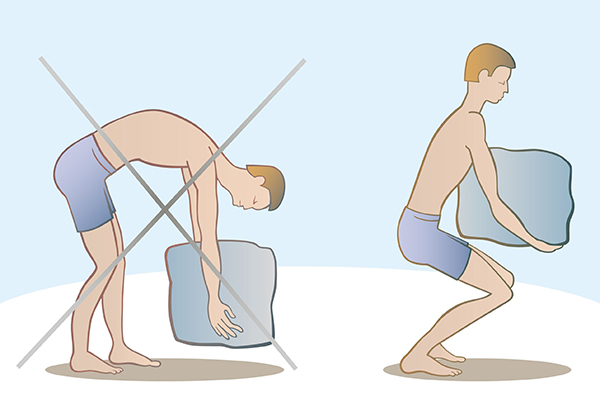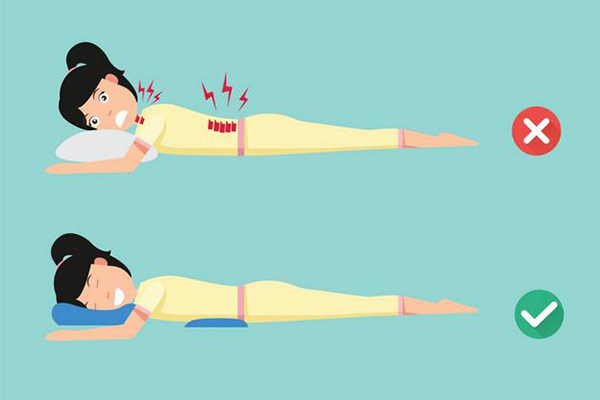There’s a strange pressure in the air when it comes to height in the U.S.—you feel it in locker rooms, dating apps, even job interviews. Being tall isn’t just seen as a physical trait here; it’s wrapped up in confidence, opportunity, and, sometimes unfairly, self-worth. You see it with teenage athletes pushing to meet NBA Combine stats, or kids obsessing over how to grow 5 inches naturally before high school ends. Parents quietly worry if their kid’s lagging behind the CDC growth chart. And yeah, a lot of that pressure? It’s baked right into American culture—sports, aesthetics, even romance.
Now, let’s break down what really drives height obsession in the U.S., and how it ties into self-esteem, body confidence, and the myths that just won’t quit.
Let’s be real—if you’re aiming to grow taller, what goes on your plate matters just as much as genetics. It’s not just about “eating more,” either. What you’re eating—and what you’re missing—is often the difference-maker during peak growth years. In the U.S., where ultra-processed foods dominate shelves, even kids hitting daily calorie targets can end up short on key nutrients. That’s the quiet threat hiding in a lot of American diets.
Now, here’s the part most people overlook: height isn’t fueled by just calcium alone. You’re gonna need a full spectrum of nutrients. Lean proteins (especially from eggs, fish, and legumes), zinc, and vitamin D are essential. Vitamin K2 plays a sneakily critical role in getting calcium to bones instead of arteries—something most people never hear about. The USDA’s MyPlate tool offers a decent starting point, but Harvard’s School of Public Health recommends going heavier on veggies and healthy fats than the federal version. And honestly? That tracks.
Fortified foods and whole-food-based supplements can help fill gaps, but nothing beats a well-diversified diet from real, whole ingredients. If your goal is sustainable growth—not just a temporary bump—you’ve gotta think beyond snacks and soda.
So, what ends up on your plate today? That’s what your height might thank you for tomorrow.

You’ve probably heard the saying “sleep is when you grow,” but here’s the thing—there’s real biology behind that. During deep sleep, particularly in the first few REM cycles, your body releases the highest bursts of growth hormone (GH). The CDC’s Sleep and Sleep Disorders branch has shown that American teens are averaging less than 7 hours per night when the ideal window for healthy GH secretion sits closer to 9. That gap isn’t small—it’s the difference between full potential and stalled progress.
Now, toss in late-night screen time and blue light exposure, and melatonin production takes a hit. That’s the hormone that sets your circadian rhythm, basically the timer for when your body decides, “okay, time to repair and grow.” The Sleep Foundation and the American Sleep Association both emphasize a consistent bedtime routine—dim lights, no screens, maybe a quick stretch—to reset that rhythm. Even devices like Apple Watch Sleep Tracker or Fitbit can help track REM cycles if you’re into data-driven progress.
If the goal is to grow taller naturally, quality sleep isn’t optional—it’s the foundation. Miss it too often, and no supplement or workout plan will make up for what your body loses in the dark.
Posture and spinal decompression create immediate height gains in appearance and, over weeks, improve spinal flexibility that supports true posture height. Focus on short, consistent sessions: yoga flows (Yoga with Adriene-style sun salutations), targeted decompression (child’s pose, hanging stretches), and core-strengthening moves that brace the spine. Fitness clubs (LA Fitness, Planet Fitness) and platforms like Peloton offer guided classes; ACE-certified trainers can tailor routines. Track habit consistency with fitness apps or wearables.
Well-executed, daily practice plus attention to spinal flexibility and core strength creates a taller, straighter silhouette—try this sequence for visible posture gains.

There’s a whole market in the U.S. dedicated to helping you look taller without actually adding a single inch to your bones—and honestly, some of it works better than expected. If the goal is to stand straighter, feel more aligned, or just boost confidence with a taller silhouette, a few tools can give you a solid edge.
Here are some height-enhancing gadgets and products that stand out (pun intended):
None of these fix slouching or poor posture overnight. But when used right—and not just bought and forgotten—they can help you reclaim every inch you already have.

You’ve seen it happen—some kid hits a massive growth spurt between spring and fall, shows up to school six inches taller, and suddenly qualifies for varsity. That sudden vertical jump? It’s actually mapped out in detail in the CDC’s growth charts, which track U.S. percentile benchmarks from early childhood through 20. Most American teens hit their biggest growth surges between ages 11–15 for girls and 13–17 for boys, driven largely by spikes in estrogen and testosterone during puberty stages. But here’s what’s rarely talked about: plenty of teens grow well after the so-called “cutoff.”
Late bloomers—especially males—can gain 2–4 inches after 18 under the right hormonal conditions and skeletal flexibility. The American Academy of Pediatrics has noted delayed growth in teens with later-onset puberty, and high school sports height cutoffs don’t always account for that lag. NCAA eligibility standards even indirectly favor those who hit their peak late, giving them an edge in sports like basketball and track.
Now, here’s the practical takeaway: if you’re still under 21 and haven’t hit your final height, there’s more time than most people think. The window’s not closed—it’s just narrower. Stretch it wisely.
You’ve probably seen those flashy “grow 5 inches in 30 days” bottles on Amazon or GNC shelves—and maybe wondered, is any of that real? Here’s the thing: most height supplements in the U.S. aren’t FDA-approved to actually increase stature. The FDA.gov site even lists disclaimers showing these products are regulated as dietary supplements, not growth drugs, meaning companies can make bold claims without full scientific proof.
Still, not every ingredient is hype. Common formulations often include L-arginine, calcium, vitamin D, and zinc—nutrients that support bone matrix density and natural growth factor production. WebMD cites that amino acids like L-arginine may enhance growth hormone levels slightly when combined with proper sleep and exercise. But that’s the key—supplements help only if your body’s still growing or nutrient-deficient.
Now, here’s what’s worth checking before buying:
Supplements can support growth, yes, but they can’t replace hormones, sleep, or nutrition. Think of them as reinforcements, not miracles in a capsule.
In the U.S., medical height enhancement isn’t science fiction anymore—it’s a niche industry balancing possibility and pain. The most extreme option, limb-lengthening surgery, involves breaking and gradually extending the femur or tibia using internal rods. Centers like The LimbplastX Institute and the Hospital for Special Surgery perform these procedures, but the process can take 9–12 months, cost between $75,000 and $180,000, and comes with intense rehabilitation demands. It’s life-changing, yes—but not without real physical and mental strain.
Growth hormone therapy, another path, is FDA-approved only for diagnosed deficiencies or specific conditions like Turner or Prader-Willi syndrome. Using it purely for cosmetic height gain? That’s considered off-label and often denied by insurance providers such as Kaiser Permanente. According to data from the U.S. National Library of Medicine, misuse of HGH can lead to joint pain, insulin resistance, and even organ enlargement.
Here’s the honest truth—these interventions aren’t quick fixes. They demand money, patience, and psychological resilience. For those seriously considering it, full disclosure, ethical guidance, and post-surgery counseling matter just as much as the centimeters gained.
You won’t hear this in most growth advice videos, but everyday habits—especially the subtle ones—can quietly hold you back from reaching your full height potential. In the U.S., where screen time has doubled since the early 2000s (according to Pew Research), most teens spend over 7 hours a day seated, hunched, and static. That kind of posture day after day? It trains your spine to compress rather than elongate.
Then there’s the diet side. Junk food culture, driven by apps like Uber Eats and endless drive-thru options, leads to nutrient gaps that affect bone health—mainly calcium, magnesium, and vitamin D. Caffeine, if consumed excessively during adolescence, may interfere with calcium absorption, especially when combined with low dairy or plant-based intake. Nicotine use is another major red flag. The American Lung Association links early tobacco exposure to stunted growth via disrupted oxygen flow and hormone interference.
So, what are the common culprits stunting growth or posture in the U.S.?
Cutting these out? That’s the real teen height hack no one’s selling.
Here’s the thing—height insecurity doesn’t start in the mirror. It usually starts in rooms where comparisons are constant: dating apps, locker rooms, office meetings. In the U.S., especially, height bias is subtle but persistent. A 5’8″ guy might feel invisible on Bumble while a 6-footer gets twice the swipes, and hiring data shows taller applicants are perceived as more “leader-like.” It’s frustrating—but not hopeless.
Therapists on platforms like Talkspace and BetterHelp often recommend cognitive reframing as a first step. That means learning to separate height from value. Confidence isn’t built by ignoring the issue—it’s built by owning what can’t be changed and dialing up what can.
According to the American Psychological Association, strategies like mindfulness (Headspace is a solid starting point), self-image journaling, and even assertive communication practice help rewire self-worth at the root.
Here’s what works when the outside noise gets loud:
You can’t stretch your bones past a certain point. But you can stretch your mindset—and that shift hits harder than any growth hack.
Here’s what most people don’t realize—height may open a few doors, but it’s hustle that keeps them open. Some of the most successful public figures in the U.S. have been “too short” by industry standards and still built empires. Look at Kevin Hart. Standing just over 5’2″, he’s not only one of Hollywood’s highest-paid comedians (according to Forbes), but also a producer, fitness mogul, and global brand. That’s not a fluke—it’s work ethic, sharp branding, and presence that fills a room.
Tech’s no different. Jack Ma, founder of Alibaba, faced rejections early on—including one from KFC—and stands around 5’4″. Yet his net worth landed him on Forbes billionaire list multiple times. Even in the NBA, where height seems like a prerequisite, players like Muggsy Bogues (5’3″) and Spud Webb (5’7″) made lasting marks.
So, what’s the real takeaway here?
Tall or not, the U.S. rewards the bold. That’s the part worth focusing on
Related post: